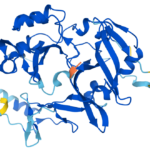The year in disruptive technology
By Matt Field | December 27, 2018
 Credit: Nogas1974 CC BY-SA 4.0
Credit: Nogas1974 CC BY-SA 4.0
It’s late December again and in the journalism business that usually means it’s time to crank out a few best of lists; often, they are exhortations for some tech gadget that aims to make life fun, productive, and easy. The following best of list focuses on a darker side of the wide-scale technology revolution underway around the world.
Russian intelligence operatives turned social media platforms into the latest battleground in information warfare. A scientist in China bowled over ethical standards to create babies with hereditable edits to their genomes. Militaries around the world studied swarms as a new way of waging war. There was a lot to write about on the disruptive technology beat this year. The following represent some of the best Bulletin takes.
The promise and peril of military applications of artificial intelligence
By Michael C. Horowitz
The promise of AI—including its ability to improve the speed and accuracy of everything from logistics and battlefield planning to human decision making—is driving militaries around the world to accelerate research and development. This overview introduces a five-part series, each piece of which explores a different aspect of the AI-driven revolution in military affairs now underway. All these pieces are worth your time.
Designer warriors: Altering conflict—and humanity itself?
By Brad Allenby
Modern war doesn’t look like the wars of the past that featured big battles resulting in lots of deaths. Instead, Brad Allenby argues, it looks more like the “campaign Russia is waging against Ukraine, the Baltic States, and the US domestic political process”–a cyber-technology-driven “whole of society” attack on adversaries. Governments are using artificial intelligence and newer technologies like social media to enhance everything from their soldiers to their warfighting strategies.
Synthetic biology: A call for a new culture of responsibility
By Ali Nouri and Shahram Seyedin-Noor
Bacteria with sensors to detect pollution? The interdisciplinary field of synthetic biology has churned out some undoubtedly positive innovations, but has also created some new risks like the ability to more easily create pathogens or toxins. Ali Nouri and Shahram Seyedin-Noor write that with new tools such as enhanced software for bioengineering and artificial intelligence applications, “It becomes clear that even a novice without formal scientific training could eventually use these tools, for good or evil.”
The White House shallowfake: Press secretary uses manipulated video in war against press
By Dawn Stover
In a recent well publicized spat, the White House revoked CNN reporter Jim Acosta’s press badge, alleging he pushed an intern. The White House even had evidence. The press secretary posted a video on Twitter showing Acosta seemingly shoving a woman as she reaches for a microphone. Only it wasn’t real. While not as sophisticated as a so-called deepfake, a technique to alter video to make it appear a celebrity is saying something he or she didn’t, the White House shallowfake, as author Dawn Stover calls it, further demonstrates how some use digital technology to manipulate public opinion and weaken democratic institutions like the press.
Chinese twins are allegedly the first “genetically edited” babies
By Matt Field
He Jiankui, a US-trained Chinese researcher, shocked the world when he announced he’d used CRISPR gene editing technology to alter the genomes of embryos that were carried to term. Jiankui disregarded the scientific community’s concerns over the ethics of gene editing, especially hereditable gene editing. His announcement quickly overshadowed everything else at the major scientific conference he was attending and became international news.
How swarming will change warfare
By Paul Scharre
While often conceptualized as soulless killing machines, in truth the US military drones in circulation often require teams of operators in remote locations. All of that is changing as autonomous, artificial-intelligence based drone technology, particularly swarming drone technology, makes progress. Smaller high-tech nations will benefit the most. But, Paul Scharre argues, the most important change will be the “way militaries organize and fight on the battlefield.”
Together, we make the world safer.
The Bulletin elevates expert voices above the noise. But as an independent nonprofit organization, our operations depend on the support of readers like you. Help us continue to deliver quality journalism that holds leaders accountable. Your support of our work at any level is important. In return, we promise our coverage will be understandable, influential, vigilant, solution-oriented, and fair-minded. Together we can make a difference.
Topics: Analysis, Disruptive Technologies















